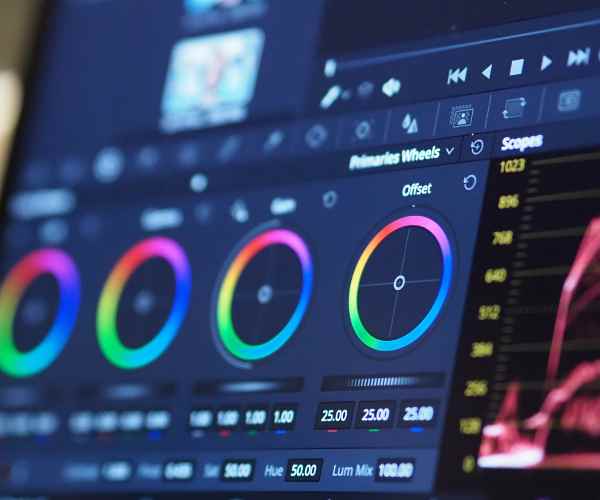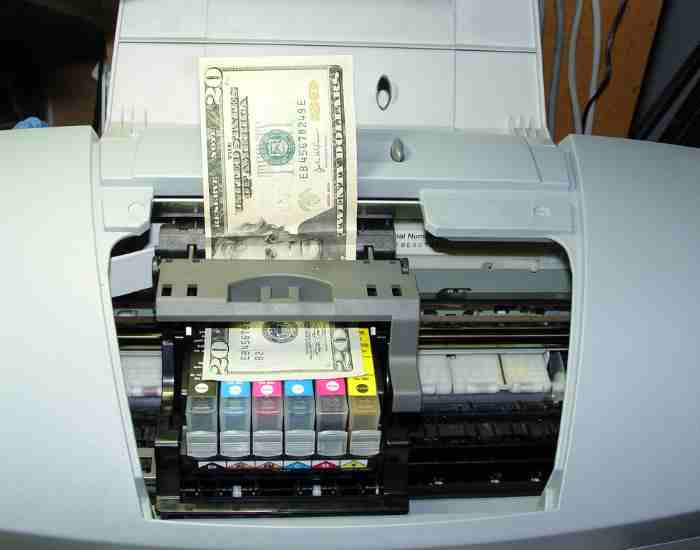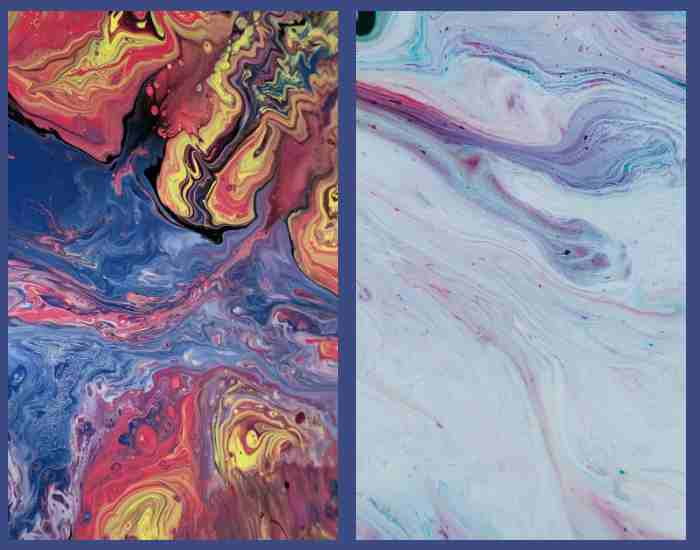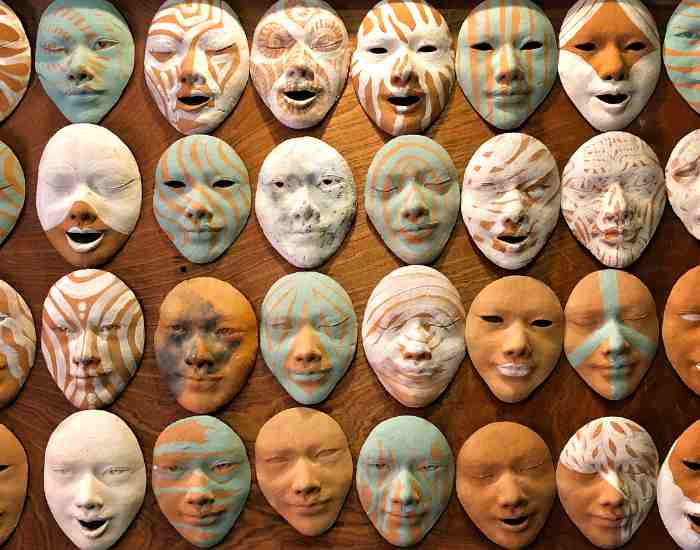Street Art Stories: Murals That Speak Volumes dives deep into the issues of particular culture and community identity as encapsulated by the murals.
Murals as well as street art are a powerful form of expression, telling in depth stories of the culture that exists there.
They involve a variety of subject matter such as socio-economic matters, local history, personal perspective and even political views.
This time, I would like to focus on the prominent murals, their artists, and the characterization of some cities through such art.
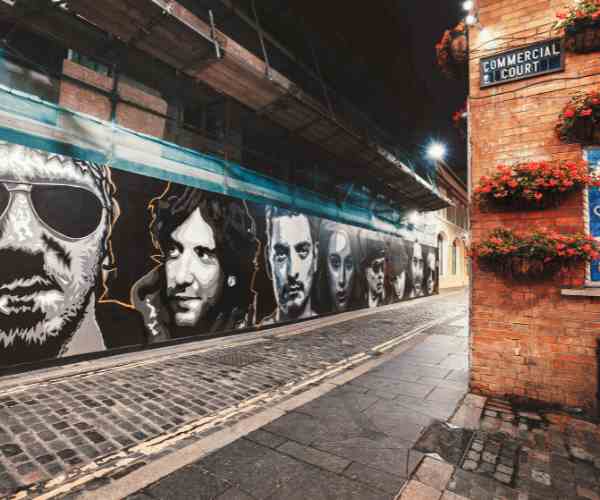
The Evolution of Street Art
Origins and Early Influences
Mural arts have a long tradition, and the earliest forms of street art date way back to some ancient civilizations that used them to narrate and depict their eras, their faiths, and events of their times, such as Egyptian tomb murals and Greek frescoes, which served both purposes: historical documentation and art.
In the present day, however, a new turning point came with the launch of the Mural Arts Program in Philadelphia in the 1980s. Thanks to this program, the city was able to hire local artists such as Meg Saligman and David McShane to turn the walls of Philadelphia into massive art canvases. This program intended to improve the urban fabric by changing the perception of the places and the people in them through the use of mural art.
The statistics provided by the research do corroborate the thesis, according to which such mural arts programs like in Philadelphia increase community spirit and decrease vandalism, as NPAP claimed in its paper. Furthermore, research conducted by the University of Pennsylvania in Philadelphia corroborates that within vibrant urban areas participating in mural arts, graffiti has decreased by 25 percent and community relations have improved.
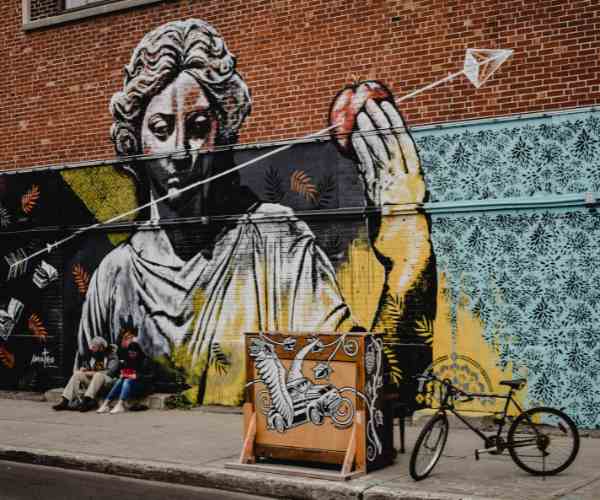
The Modern Street Art Movement
In recent times, modern street art can be observed as a global culture which pushes the envelope of traditional artistry. For example, Amy Sherald and Shepard Faire are established as prominent contemporary artists. This type of art, more than any other, reflects the ongoing trend of Social Correctness and Social Responsibility.
Modern murals usually depict action packed characters that incorporate a plethora of different experiences of various communities. For example, Shepard Fairey’s Obey Giant and the Hope image are good examples that use graphics as art to promote social and political issues.
As noted in the 2017-2018 International Street Art Report prepared by the International Street Art Association (ISAA), the global market of street art has been expanding annually by 15% and is heavily connected to the growth of public art programs and, the acknowledgment of street art as a form of art.
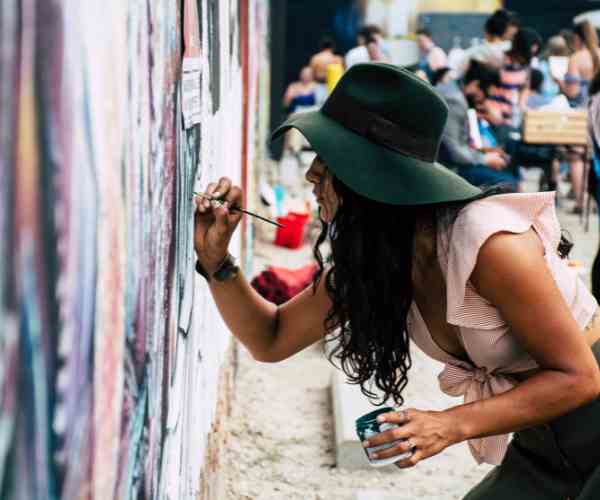
Iconic Murals That Tell a Story
Mural 1: The Berlin Wall Murals
The Berlin Wall Murals serve as proof of how street art can redefine the concepts of freedom and unification in one picture. These murals painted on the remaining sections of the Berlin Wall cover significant moments such as the Cold War and the disintegration of the Berlin Wall.
Keith Haring and Gunter Demnig are some of the artists that contributed to these murals and used pictures to promote ideas of hope and peace. One of the largest and most important outdoor galleries in the world, the East Side Gallery at over 100 images, is made on a 1.3 kilometer strip of the Wall covering in excess of 100 paintings.
A poll conducted by the Berlin Senate in 2022 found that the East Side Gallery is visited by roughly 3 million people every year. This fact displays the impact that these murals have on people from all over the world as well as on the local population.
Mural 2: The Hollywood Boulevard Murals
Located in Hollywood Boulevard are murals celebrating the entertainment industry and pop. These have parts that nod at the history of Hollywood, the greatest film stars and local culture.
A prime illustration is the Grauman’s Chinese Theatre Mural that celebrates the grandeur of Hollywood and its film history. Kent Twitchell is among the artists that have done these murals, and their work defines the city through art.
The murals on Hollywood Boulevard align with a larger movement of blending street art with tourist sites for aesthetic and cultural purposes. The Los Angeles Tourism Board notes that artwork on the Hollywood Boulevard walls drives an additional 10% of the people who visit the site per year.
Mural 3: Melbourne Laneways Murals
Most of Melbourne’s cityscapes today feature mural art depicting multiple elements. Among these, Melbourne’s laneways full of wall paintings is popular and an attraction in the city. These murals have helped Melbourne stay a cultural center which captures the creative essence of the city.
Cesar Viveros’ murals and Brianna Hill/WHYY’s pieces in Melbourne’s laneways have brought life to the walls by creating colorful illustrations around issues relating identity, social change and urban growth.
Based on a survey conducted by Melbourne City Council in 2021, it was discovered that the murals on the laneways have breathed life into these areas leading to a 20% growth in business in the area and a 15% boost in tourism2.
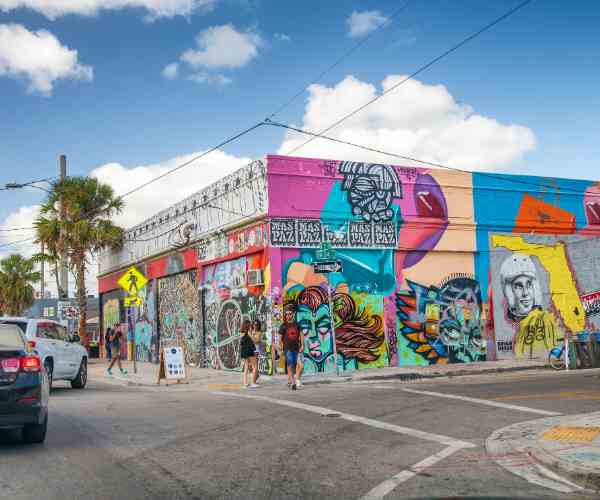
The stories behind the brushstrokes
Artist Interviews and Insights
Murals are artworks in which local artists add meaning to them. Artists like Cesar Viveros or Brianna Hill/WHYY work on the significance behind these artworks.
Philadelphian, Cesar Viveros, has his signature vibrancy in his murals. He recollects his motivation when pondering on them. Colors and shapes elaborate Wiveros’s arts constructing a commenced affair with the target audience. He portrays the culture of North Philadelphia with color and pop art.“
Another sticker artist, Brianna Hill/WHYY, describes some of the messages hidden inside her work. Social injustice or communities in danger are some of the issues she aims to tackle in her murals. Politician portraits or memories in Broad Street, Philadelphia are other works encouraging a social interaction targeting the problems in the country.
In as much as they try to integrate the turbulence experienced in their lives to the society they are in, they use their personal concepts. For instance, Hill expresses how the community shapes her designs while Vivero depicts how his roots in South Philadelphia influence him.
Neighborhood Engagement and Conversations
The murals at Ridge Avenue and Broad Street in Philadelphia have prompted conversations and involvement among the residents. This is because the artwork portrays the social struggles that the people from the area deal with on a daily basis, leading to these pieces becoming synonymous with the urban culture.
The murals at Ridge Avenue that are situated at Broad and Ridge avenues in Philadelphia, have changed underdeveloped places into public working areas. This has furthermore boosted community morale and restored the neighborhood, as these paintings have become pillars of pride. These murals also drive people from the community to actively take part in their events and talks, which helps shape the notion of these murals further.
With Broad Street also being a crucial area, the murals located here revolve around the history and the state of the city, allowing people to have discussions about Philadelphia’s culture and issues. Colombian perspectives show how these creations have fostered local pride and have made steps to combat more subtle and broad issues facing all of Colombia.
Penn University has shared research that states murals in the Ridge Avenue and Broad Street, Philadelphia, have enhanced the participation rates by 30%. Such a great example of street art is extremely effective in changing and showcasing what the community stands for, and the people living there.
How Murals Influence Urban Spaces
Beautification of Areas and Neighborhood Improvement
Neglected places are worked upon during urban renewal with the use of murals as a foremost to beautify the zone. In south Philadelphia, artists have been able to turn unkempt walls andy parking lots into vibrant public artworks. This leads to a positive change in the neighborhood encouraging the use of the spaces by both the residents and the tourists.
To illustrate, the South Philadelphia murals have reshaped even those parts of the community that seemed devastated including the low community engagement and feeling of disinterest improving the aesthetics of the whole area. However, a key factor in these projects in the city of Philadelphia has been Mural Arts Program, which strives to enhance community through the use of street art in order to better the urban scape.
Moreover, the area of North Philadelphia has experienced a different shift as well, as a result of street art. The murals in this region illustrate the role that street art has played in the improvement of development of the partisanship of the neighborhood.
Economic and social impact
Indeed, street art makes places attractive, but it also helps to develop tourism and the economy of the region. The street/wall mural art extended and marketed the Walnut Street Bridge into a tourist attraction. So, this creates new streams of revenue that aid economic growth and allows the continued push for street art expansion.
Murals are a form of artistic expression that, when showcased within a community, promote a sense of ‘us’ within the locals; they often serve as a mark of social activism and pride to a certain extent. A prime example for this would Philadelphia’s Nort and South neighborhoods where murals can be seen hung to compliment the local culture and the values that the residents uphold.
Apart from the pride that the locals take in them, murals also prove to be lucrative to businessmen. It was noted by the Philadelphia Office of Arts, Culture and the Creative Economy that such artwork brings an estimated 15% increase to local economic pursuits, which greatly assists in promoting tourism and fulfilling the social needs of the society.
Can you define street art for me?
Street art covers a diverse range of publicly displayed art which ranges from; murals, graffiti, to installations. The aforementioned art forms encourage people to express and exhibit their artistic talents and allow them to portray messages related to culture, politics, or even social issues. Street art fosters up in urban areas and is often used to convey a message in a visual manner in order to depict the many stories that a city has a city.
Saligman and David’s work, which can be found on the walls of Philadelphia, are a great example as they are a great fusion of artistic portrayal along with the deep rooted history and culture of the community, or the area in which it is present. The University of Pennsylvania on the other hand provides information that suggests that street art has the ability to beautify a city and engage the community in different activities.
Who decides what murals are placed in what areas to be painted on in public spaces?
A collaborative process amongst local artists, community groups, and art councils usually results in choosing a mural that best fits the intended public space. Specific criteria must be enforced in the myrial selection process:
– Artistic Merit: Some artworks will lack quality and impressiveness and thus this criterion evaluates that. – Relevancy: Ensuring the mural portrays local culture, history or social issues in a meaningful manner. – Cultural Impact: Studying and considering how the mural would interact with the local community and what implications it would have. To provide an example, the Mural Arts Program works alongside stakeholders in Philadelphia to ensure that every mural project fits the needs of the community and the designed space and adds Threads of enhancement to the environment.
Are there any boundaries of who can perform street art?
Street art is a type form of expressing one self, however it should be considered that there are legal and ethical consequences related to it. Numerous Cities all around the world have created set parameters for public art zones in order to find middle ground between private property respect and creatively expressing oneself. a form of vandalism would be any negatively painted content deemed inappropriate and so creating street art without setters authority could lead to legal action taken. For instance, Offering zones for murals to be painted not only allows public art to be made but also allows order and property rights to be respected is what Philadelphia does providing an example of a creative solution. Similarly New York and Los Angeles have also developed citywide public programs for art projects in order to try and balance street art.
How do I locate murals residing in my city?
Here are a few means to locate murals in your area:
Mural Tours: Most cities conduct organized excursions that include numerous pieces of street art alongside their historical context and details.
Local Art Guidelines: Resources from the community and local art guidelines can help determine where certain murals and similar art can be found.
Community Recommendations: Some art communities and forums often provide local enthusiasts with places or pieces they must not miss out on.
International cities like Philadelphia or Melbourne have developed apps or maps that showcase the locations of the murals as well as detailed descriptions and information about them. Such tools can assist you in discovering and enjoying the street art within your locality.
Conclusion
Apart from being the most creative piece of an engaging and engrossing story, murals extend to the community residing around us by becoming a part of the urban civilization. So when analyzing murals over located art, one might wonder what impact it would have on the city and the people living in it – no doubt, it would be rather intriguing to watch.
Motivate your audience to appreciate as well as search for the murals in the particular spaces they reside in while considering the several tales and sentiments embedded in such pieces of art. Murals aim to enhance and elevate normal business buildings not only for aesthetic purposes but a sense of community and culture.
References
- University of Pennsylvania: Research on the impact of murals on urban environments and community engagement.
- Mural Arts Program: Overview of mural selection processes and community involvement in Philadelphia.
- Local Art Guides: Publications and resources for finding and understanding street art in various cities.
- Philadelphia Office of Arts, Culture, and the Creative Economy: Data on the Economic and Social Benefits of Murals.
More Post
- Abstract Adventures: Breaking Down Abstract Art
- How do Classic Art and Architecture Shape Modern Masterpieces? Reviving Renaissance Techniques
- How Creative Expression Enhances Mental Health? Art Therapy for Emotional Healing
- How do Painting and Photography Influence Each Other? “The Art of Blending
- How Urban Landscapes Inspire Modern Art?(Exploring Cityscapes and Skylines)


